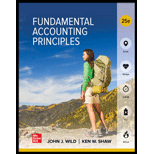
1.
A cost-of-quality (COQ) depicts quality-related costs that a firm incurs during a reporting period. These costs are bifurcated into four categories including prevention costs, appraisal costs, internal failure costs, and external failure costs.
:
The total cost of quality for last year and this year.
2.
A cost-of-quality (COQ) report depicts quality-related costs that a firm incurs during a reporting period, that can help management as well as users to determine total spending on quality, identify the areas that need attention, and improvement, and overtime recognizes the effects of their actions on both total quality costs and the components of overall quality costs.
:
Cost of each category as a percent of the total cost of quality of last year.
3.
A cost-of-quality (COQ) report depicts quality-related costs that a firm incurs during a reporting period, that can help management as well as users to determine total spending on quality, identify the areas that need attention, and improvement, and overtime recognizes the effects of their actions on both total quality costs and the components of overall quality costs.
:
Cost of each category as a percent of the total cost of quality of last year.
4.
A COQ report can help management as well as users to determine total spending on quality, identify the areas that need attention, and improvement, and over time recognizes the effects of their actions on both total quality costs and the components of overall quality costs.
:
Want to see the full answer?
Check out a sample textbook solution
Chapter 4 Solutions
FUND.ACCT.PRIN.
- Hii teacher please provide for General accounting question answer do fastarrow_forwardWhat is the dollar amount of taxes paid? Financial accountingarrow_forwardOrganic Harvest Inc. sells 40-pound bags of apples to grocery stores for $12 per bag. The fixed costs of the operation are $84,000, and the variable cost of apples is $0.15 per pound. What is the break-even point in bags? a) 5,600 bags b) 7,000 bags c) 8,400 bags d) 10,200 bagsarrow_forward
- Please given correct answer for General accounting question I need step by step explanationarrow_forwardWhat is the correct option? The general accounting question do fast explanationarrow_forwardCan you help me solve this general accounting problem using the correct accounting process?.arrow_forward
 Cornerstones of Financial AccountingAccountingISBN:9781337690881Author:Jay Rich, Jeff JonesPublisher:Cengage Learning
Cornerstones of Financial AccountingAccountingISBN:9781337690881Author:Jay Rich, Jeff JonesPublisher:Cengage Learning College Accounting (Book Only): A Career ApproachAccountingISBN:9781337280570Author:Scott, Cathy J.Publisher:South-Western College Pub
College Accounting (Book Only): A Career ApproachAccountingISBN:9781337280570Author:Scott, Cathy J.Publisher:South-Western College Pub Auditing: A Risk Based-Approach (MindTap Course L...AccountingISBN:9781337619455Author:Karla M Johnstone, Audrey A. Gramling, Larry E. RittenbergPublisher:Cengage Learning
Auditing: A Risk Based-Approach (MindTap Course L...AccountingISBN:9781337619455Author:Karla M Johnstone, Audrey A. Gramling, Larry E. RittenbergPublisher:Cengage Learning Managerial AccountingAccountingISBN:9781337912020Author:Carl Warren, Ph.d. Cma William B. TaylerPublisher:South-Western College Pub
Managerial AccountingAccountingISBN:9781337912020Author:Carl Warren, Ph.d. Cma William B. TaylerPublisher:South-Western College Pub Financial And Managerial AccountingAccountingISBN:9781337902663Author:WARREN, Carl S.Publisher:Cengage Learning,
Financial And Managerial AccountingAccountingISBN:9781337902663Author:WARREN, Carl S.Publisher:Cengage Learning,





